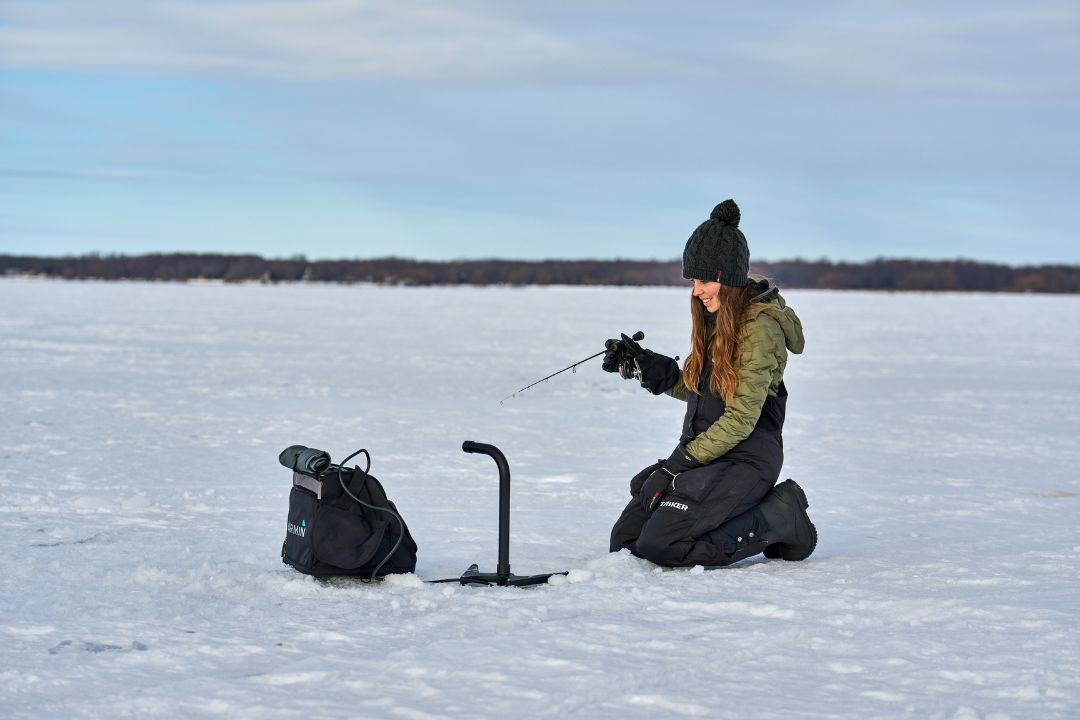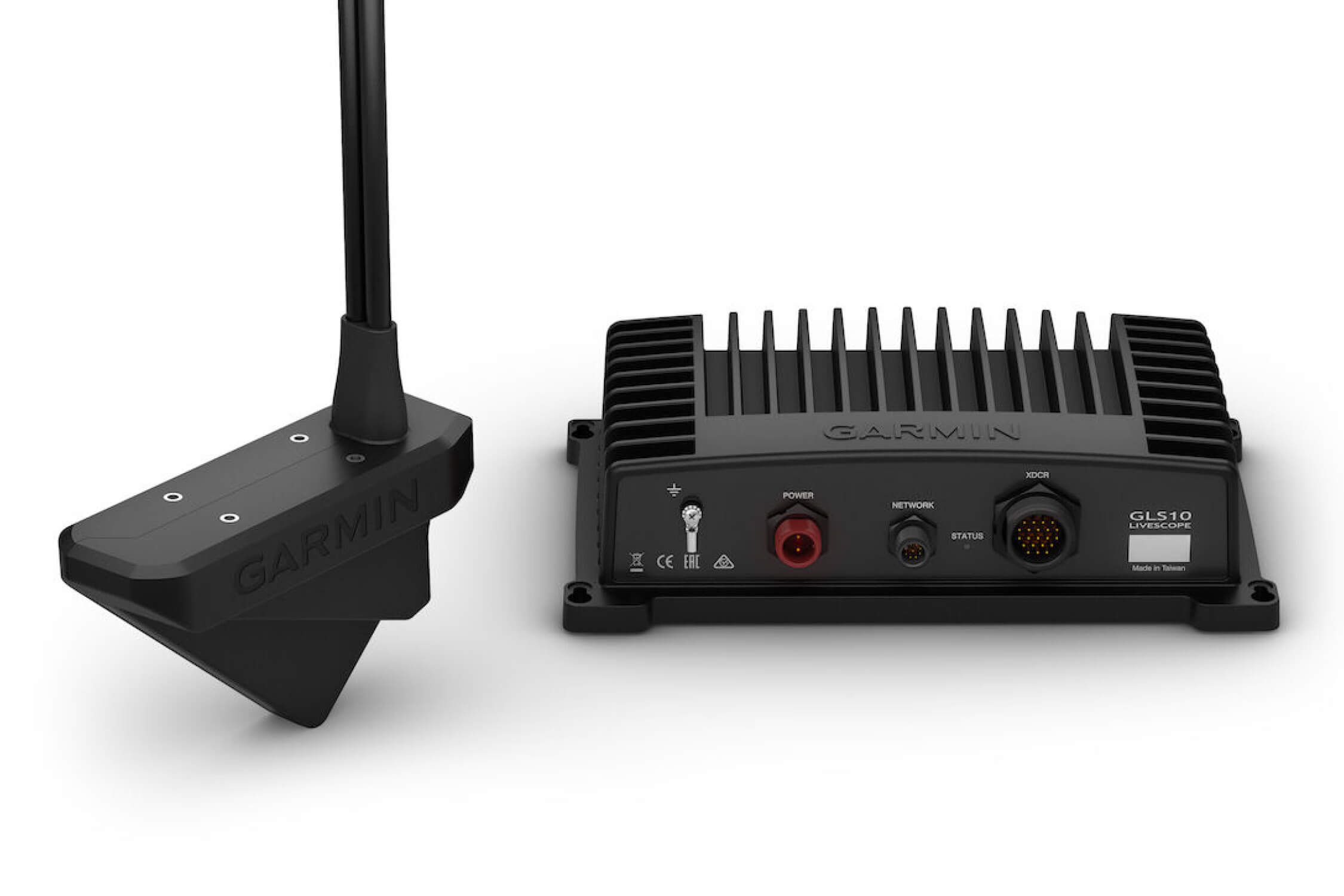CRAPPIE FISHING TECHNIQUES AND TIPS
Fishing | March 27, 2024
SAIL
December 14, 2022

Ice fishing sonars help take the guesswork out of what’s beneath the surface. Nowadays, there are a variety of sonars available which can display information such as: real-time fish activity, water depth, bottom composition, vegetation, structure, mapping, and more. This information helps anglers key in on productive areas to maximize time out on the ice. In this article, SAIL collaborator and fishing expert, Ashley Rae, will discuss ice fishing sonar features and how these technologies can help you become more efficient on the hardwater this season.
Article written by Ashley Rae of SheLovesToFish.com
In this article, you will learn more about:
Analogue flashers (also referred to as mechanical flashers) are a type of sonar that displays signal returns from objects within its beam, including fish, structure and bottom, as lighted coloured bars on a static circular display. Flashers provide a simplified real-time view of what is going on in the water column directly below your feet. User adjustable settings on most flasher models are typically limited to gain (adjusts the sensitivity of the sonar), depth range (sets the max depth range of the circular display), zoom (allows users to zoom in on a section of the water column), beam angle (select between wide or narrow beam angle) and interference rejection (helps to mitigate interference from other nearby units). Flashers typically come equipped with either single or dual beam transducers. Dual beam transducers allow anglers to select between either a narrow or wide beam. As a very general rule, wider beam angles are typically better suited for shallower water whereas narrower beam angles are better in deeper waters.
Learn more about Flashers and Ice Fishing Sonars.
Digital sonar units provide a similar view of what’s in the water column immediately below your feet, but does so while offering far more detail and functionality compared to analogue flashers. Unlike with an analogue flasher unit, the sonar return is first digitized and processed by the unit before then being displayed on screen which allows for more detail/information to be extracted from the sonar return. Digital sonar units also typically feature an LCD display, which allows for the sonar return to be displayed using a myriad of different views. Popular visualization options include: traditional 2D scrolling, a-scope, flasher emulator, zoom window, etc. All of these views can either be displayed as a single full-screen view or as part of a split-screen view along with 2 or more different visualizations.
Digital sonars also offer far more advanced settings and customization options such as different colour palettes, ping speeds, brightness settings and more. They can also automatically make adjustments to certain settings in order to be as user-friendly as possible and to provide the clearest return (for example: using Auto Depth and Auto Gain features).
CHIRP is the latest in 2D sonar technology and it is available in some Garmin fishfinder models. Unlike traditional 2D sonar which uses either a single or dual frequency, CHIRP transducers send a continuous sweep using multiple frequencies to provide an even clearer, high resolution image which improves detail, even in deeper waters.
One of the most popular views for traditional 2D and CHIRP is the traditional 2D scrolling view. It provides a “history” of the water column since it keeps scrolling and updating constantly rather than a flasher which only shows the current view. Having the history is great as you are able to scroll back through to further inspect how a fish reacted, or see what depth they came in at.
SAIL carries Garmin ice fishing sonar bundles which, with the necessary accessories, can also be mounted on a boat or other watercraft. Learn more about ice fishing kits.
If you’re considering a fishfinder for year-round use, you can learn more about all fishfinder technologies.
Some sonar models have built-in GPS capabilities and basic mapping. Maps can help with revealing key areas, such as: points, contours, humps, and other likely structure. It is also helpful to be able to mark waypoints on productive areas so you can easily find these locations once again in the future.
For more detailed and up-to-date mapping data, there are SD, MicroSD, and downloadable subscription-based maps available for compatible fishfinder models through Garmin and Navionics.
Garmin’s Quickdraw mapping (a feature available on compatible fishfinders) is incredibly useful, especially when fishing on uncharted bodies of water. This feature allows you to create personalized high-definition fishing maps with detailed 1-foot contours by recording information right on your Garmin fishfinder versus relying on what’s commercially available. Even if the lake or river you’re fishing already has mapping available, Quickdraw allows you to capture greater detail for contours and structure that may or may not be present on the map. This feature can easily be adapted for ice use by turning the recording on and off at each hole when hole-hopping to draw out a map of the area you’re fishing.

When it comes to Livescope, the two most useful forward facing sonar views are Forward and Down modes. Forward mode aims the beam out and away from you and allows you to scan up to 200’ away. It is particularly useful for locating fish and likely-looking structure from a distance, which makes for a far more productive day on the ice (less time drilling, more time fishing). That’s to say, gone are the days of having to hope that the hole you just drilled happens to be on the exact spot it needs to be to mark what you’re looking for. Down view aims the beam directly below you and out to either side. It is best suited when setting up on a spot once you’ve already located fish or structure or if you plan to stay in one spot without moving much.